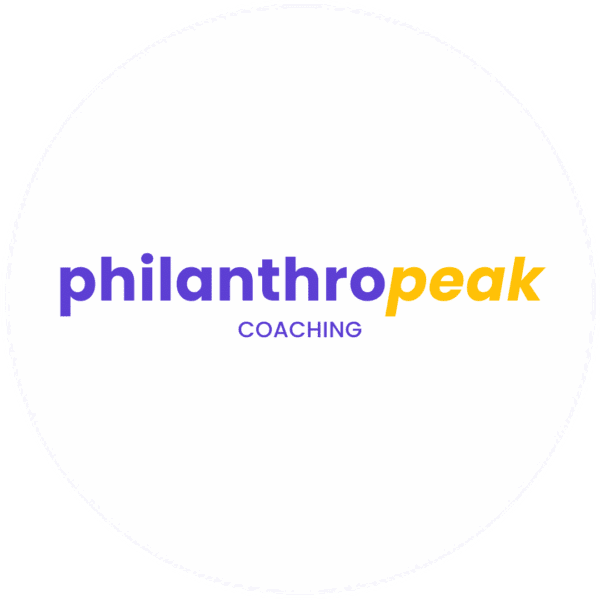
The Power of Breaks: Preventing ADHD Burnout at Work for Enhanced Productivity
Table of Contents
ToggleEver felt like your brain’s about to fry from all the work? You’re not alone. For folks with ADHD, juggling tasks can feel like a never-ending circus act. The constant mental gymnastics often lead to burnout, leaving you drained and less productive. But here’s a secret weapon: breaks. Yep, simple pauses in your day can make a world of difference. Let’s dive into how taking breaks can help prevent burnout, especially if you have ADHD, and boost your work mojo.
Key Takeaways
- Breaks are essential for refreshing your mind and keeping burnout at bay, especially for those with ADHD.
- Short, regular pauses can boost focus and help manage ADHD symptoms, making you more productive.
- Incorporating breaks into your routine isn’t just good for your brain; it’s a great way to recharge and tackle tasks with renewed energy.
- Using tools like timers or apps can remind you to take breaks, ensuring you don’t overwork yourself.
- Creating a supportive work environment with understanding colleagues can make it easier to take necessary breaks.
Understanding ADHD and Burnout
The Intersection of ADHD and Burnout
ADHD and burnout often go hand in hand. Folks with ADHD might feel like they’re in a constant tug-of-war with their symptoms, which can lead to ADHD burnout. The unique challenges faced by those with ADHD, like inattention and impulsivity, can make it tough to manage daily tasks, upping the risk of burnout.
Why ADHD Increases Burnout Risk
People with ADHD are more likely to experience burnout due to several factors:
- Inattention: Struggling to focus can lead to missed deadlines and increased stress.
- Impulsivity: Making snap decisions can pile on extra work and stress.
- Hyperactivity: A constant need for movement can prevent necessary breaks, leading to exhaustion.
Recognising Burnout Symptoms in ADHD
Spotting the signs of burnout is crucial for prevention. Common symptoms include:
- Decreased energy levels: Feeling wiped out even after rest.
- Lack of motivation: Losing interest in activities once enjoyed.
- Negative emotions: Experiencing cynicism or detachment from responsibilities.
Understanding the factors contributing to burnout, especially in the context of ADHD, is the first step toward finding solutions and building resilience. Recognising these symptoms and their connection to ADHD can help individuals take proactive steps to manage their wellbeing and prevent burnout.
The Role of Breaks in Preventing Burnout

The Science Behind Breaks and Productivity
Taking breaks isn’t just about stepping away from your desk. It’s a science-backed strategy to boost productivity. When we work non-stop, our brains get fatigued, leading to decreased focus and efficiency. Short, regular breaks can recharge your mental batteries, improving concentration and creativity. The Pomodoro Technique, for example, encourages work in short bursts with breaks in between, helping maintain high levels of focus and reducing the risk of burnout. This technique is particularly useful for those with ADHD, who often thrive on structured work intervals.
How Breaks Help Manage ADHD Symptoms
For individuals with ADHD, breaks are not just beneficial—they’re essential. Constant work without pauses can exacerbate symptoms like inattention and restlessness. By scheduling regular breaks, you allow your mind to reset, which can help in managing ADHD symptoms more effectively. These breaks can involve activities that promote relaxation, such as stretching or a quick walk, which can help reduce stress and improve overall well-being.
Incorporating Breaks into Daily Routines
Integrating breaks into your daily routine might sound simple, but it requires planning. Start by identifying tasks that require intense focus and schedule short breaks around them. Use techniques like structured sprints to manage your time effectively. This involves working in focused intervals followed by brief pauses, which can help maintain motivation and prevent burnout. Additionally, consider using reminders or apps that prompt you to take breaks, ensuring they’re a regular part of your workday. Remember, breaks aren’t a waste of time—they’re an investment in your productivity and mental health.
Effective Self-Care Strategies for ADHD Professionals

The Importance of Self-Care in Preventing Burnout
For ADHD professionals, self-care isn’t just a nice-to-have; it’s a must-do. Without it, burnout is almost guaranteed, given the unique challenges faced daily. Prioritising self-care can be the difference between thriving and just surviving. It’s about finding those activities that recharge your batteries and help you stay focused. This might mean getting enough sleep, eating well, or even just taking a few minutes to breathe deeply. Remember, self-care is not selfish; it’s essential.
Incorporating Relaxation Techniques into Daily Routine
Relaxation techniques can significantly ease the stress that often accompanies ADHD. Here are a few methods to consider:
- Deep Breathing Exercises: Spend a few minutes each day focusing on your breath to calm your mind.
- Mindfulness Meditation: Engage in short sessions to help keep you grounded and reduce anxiety.
- Short Walks: A quick stroll can clear your head and boost your focus.
These small practises can make a big difference in your daily routine.
Balancing Work and Personal Life
Finding a balance between work and personal life is critical for preventing burnout. Here are some tips:
- Set Boundaries: Clearly define your work hours and stick to them to avoid overworking.
- Schedule Downtime: Make time for hobbies and relaxation to unwind and recharge.
- Use Organisational Tools: Apps and planners can help manage tasks and reduce stress.
Balancing these aspects can lead to a healthier, more productive life.
Utilising Technology and Tools for Better Management

For those with ADHD, staying organised can be a real battle. But with the right tools, you can turn chaos into order. Task management apps like Trello or Asana are lifesavers. They break down big projects into smaller, manageable parts, making it easier to keep track of what needs doing. Calendars and reminder apps are also crucial. They help you remember important dates and deadlines, so nothing slips through the cracks. And then there are focus apps, which block distractions during work hours, keeping you on task.
Time management can be tricky, especially when you’re juggling a lot. Some apps can really help with this. Pomodoro timers, for instance, encourage you to work in short, focused bursts, followed by breaks. This can boost productivity by keeping you refreshed. Time tracking tools let you see where your time goes, helping you spot areas for improvement. Daily planners, especially digital ones, can help you organise your day and prioritise tasks, ensuring you stay on top of everything.
Technology isn’t just about getting work done; it can also help reduce stress. Mindfulness apps guide you through relaxation techniques, helping to manage stress levels. Virtual support groups connect you with others who understand your challenges, offering emotional support and practical advice. Automated reminders for self-care activities ensure you take necessary breaks, helping you avoid burnout.
Integrating these tools into your daily life can create a more structured, supportive environment. This not only boosts productivity but also helps reduce stress, making work more manageable and life a bit easier.
Creating a Supportive Work Environment

Adapting Workspaces for ADHD Needs
Creating a workspace that caters to the needs of employees with ADHD can greatly improve their productivity and job satisfaction. Flexible work hours are a game-changer, allowing employees to work when they feel most alert and focused. This approach respects their natural energy cycles and can lead to better performance. Additionally, providing quiet workspaces can help minimise distractions, which is crucial for maintaining concentration. Simple adjustments, like using soothing colours and adjustable lighting, can also create a more comfortable and less stimulating environment.
Promoting Healthy Work-Life Balance
A healthy work-life balance is essential for preventing burnout, especially for those with ADHD. Encouraging employees to take regular breaks and manage their workload effectively is key. Implementing strategies like incorporating regular breaks and offering flexible work arrangements can help employees recharge and maintain a balance between their professional and personal lives. This balance not only enhances productivity but also contributes to overall well-being.
Encouraging Flexibility and Understanding
Fostering a culture of flexibility and understanding in the workplace is vital. Managers should be trained to recognise and support the unique challenges faced by employees with ADHD. This includes offering support in planning and prioritising tasks and ensuring employees have the necessary resources to succeed. Encouraging open communication can help create an environment where employees feel comfortable discussing their needs and seeking assistance when necessary. By nurturing such a supportive culture, organisations can help employees with ADHD thrive and contribute effectively to their teams.
Celebrating Successes and Maintaining Motivation
Celebrating wins, no matter how small, is super important for keeping motivation high, especially for those dealing with ADHD. It’s easy to shrug off minor victories, but giving them a nod can really boost morale and self-esteem. For ADHD folks, setting realistic goals and breaking tasks into bite-sized pieces can make success feel more within reach.
- Track Progress: Keep a journal or use a digital app to jot down every success, even the tiny ones.
- Reward Yourself: Treat yourself to something nice as a pat on the back for your efforts.
- Share Successes: Chat about your wins with friends or a support group to keep the positive vibes going.
Celebrating small wins helps in recognising progress and keeps you motivated for the next challenge.
Life with ADHD can be a rollercoaster, full of ups and downs. Staying motivated through the tough patches is a skill worth mastering. One way to keep the fire burning is to connect with your ‘why’—the reason you started a task in the first place. This connection can act as a compass, guiding you through the rough seas.
- Identify Challenges: Recognise what hurdles you face regularly and think of ways to tackle them.
- Stay Flexible: Adapt your strategies when things don’t go as planned.
- Seek Support: Lean on friends, family, or professionals who understand your journey.
A positive mindset can be a game changer. It’s about seeing setbacks as learning opportunities rather than failures. For those with ADHD, this shift in perspective can make a huge difference.
- Practise Gratitude: Focus on what’s going well in your life, however small it might be.
- Set Realistic Expectations: Avoid setting the bar too high, which can lead to disappointment.
- Positive Self-Talk: Be your own cheerleader, not your harshest critic.
Remember, maintaining a positive outlook can help you navigate through challenges and keep your motivation alive.
In our journey of celebrating achievements, it’s essential to keep our spirits high and stay motivated. Every small win counts, and recognising them can fuel our drive to reach even greater heights. If you’re ready to unlock your potential and overcome the challenges of ADHD, visit our website for more resources and support. Let’s take this journey together!
Conclusion
Taking breaks at work isn’t just a nice-to-have; it’s a must for keeping burnout at bay, especially for folks with ADHD. By stepping away from tasks, even for a short while, you give your brain a chance to recharge. This isn’t just about resting; it’s about coming back with a fresh perspective and renewed energy. Regular breaks can help you stay focused, keep stress levels down, and boost your overall productivity. So, next time you’re feeling overwhelmed, remember that a little pause might be just what you need to get back on track. It’s all about finding that balance and making sure you’re taking care of yourself while getting the job done.
Frequently Asked Questions
What are the signs of ADHD and burnout?
ADHD signs include being easily distracted, forgetfulness, and trouble focusing. Burnout symptoms involve feeling very tired, losing interest in things you used to enjoy, and feeling detached from your responsibilities.
How can I tell if my issues are from ADHD, burnout, or both?
If you’re struggling with focus and feel mentally drained, it could be both. ADHD affects attention, while burnout makes you feel exhausted and less motivated. Noticing when these feelings happen can help you figure it out.
What steps can I take to manage ADHD and prevent burnout?
Try breaking tasks into smaller steps, use reminders, and take regular breaks. It helps to have a routine and use tools like planners or apps to stay organised.
Why is self-care important for ADHD professionals?
Self-care helps you recharge and manage stress. It includes getting enough sleep, eating well, and taking time for activities you enjoy. This can improve your focus and prevent burnout.
How can I build a support network to help with burnout?
Reach out to friends, family, or support groups who understand your challenges. Sharing experiences and getting advice can make you feel less alone and more supported.
What role does technology play in managing ADHD?
Technology can help you stay organised and focused. Apps for task management, reminders, and focus can reduce distractions and help you keep track of your responsibilities.





